What are the Best and Worst Foods for EBV?
Let me help you get back to basics to help sustain your healing and turn off Epstein-Barr Virus. I want you to first focus on a few simple things that will be easy for you to incorporate into your life. Everything else is secondary.
If you want to ward off EBV, you need to:
- Decrease your oxidation – bring in heavy duty antioxidant foods
- Ensure you’re eating the right type and amount of fiber
- Enjoy culinary herbs and spices with wild abandon as they are easy to incorporate
- Incorporate specific herbal teas, drunk mostly as hot teas with or away from meals
- Avoid junk food so you do NOT feed your NFkB, an inflammatory protein that is used by EBV to replicate itself.
This is it in a nutshell!
In order to understand what to eat when you have EBV, you have to understand oxidation…

EBV and Damage from Oxidative Stress
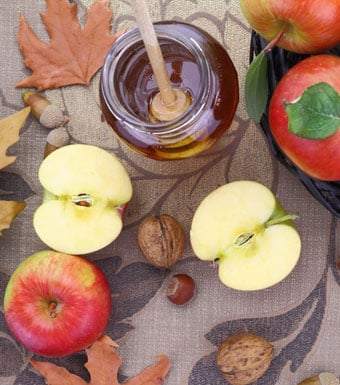
EBV produces massive amounts of oxidative stress in your body. Do you ever wonder why, even if you were an avid athlete before, if you now do any substantial amount of exercise, you have to “recover” after it? Possibly being bed-ridden for a day or two? You discover very quickly that you cannot exercise, which is quite depressing in itself.
Why is that and what does it have to do with EBV?
Oxidation is a fact of life. Just cut a raw potato or an apple in half and they will brown. Leave your bike out in the elements for a while and it will rust.
Certain aspects of our lives increase oxidation in our bodies. Vigorous exercise is one of them, along with environmental toxins (smoke, UV rays, pollution), and EBV. Marathon runners actually have an increased risk of dying from cardiac events – a well-established fact – due to extended times of oxidative stress, more than the body can cope with to recover.
When you are healthy, and your diet is full of beneficial nutrients, the body has enough support to maintain balance between oxidative stress levels and your health. When you have EBV, the scale is already tipped. Your body is under a constant attack from oxidation produced by the immune system in its attempts to destroy viruses (EBV), bacteria and damaged cells.
Here is a triple whammy: now you know that EBV causes an incredible level of oxidation. But on top of that, a nutritionally deficient person (even without active EBV) has a higher oxidative stress, and this is when “a normally avirulent virus becomes virulent because of the changes in the viral genome” (Beck, 2000). So, if 90 to 95% of global population walks with hidden EBV, all you need is a drop in your nutritional status (food quality) and you are at risk of reactivating or turning on the virus.
And exactly how defincient are we in basic nutrients?
This is not good news, and I write on this topic extensively in the EBV Solution book. According to studies, Americans do not meet even meager governmental standards of basic nutrient needs – evident in study after study. The top soil is dying or becomes depleted due to aggressive industrial farming practices. The nutrient density in crops depends on the quality and the soil, period. An apple today does not match the nutritional makeup of an apple 50 years ago. So you overeat but are undernourished.
Microwaving is so common that it is considered normal. It is NOT normal. Again, I have a whole chapter on that topic and research on the nutrient losses from microwaving foods in the book.
Here is the single most important thing I want you to remember, if you forget everything else from this article:
Medical research is clear:
“When your nutritional status decreases,
viruses become more virulent [meaning: more aggressive].”
That concerns your EBV but also COVID and other viruses!
Why do those with EBV NEED Antioxidants?
Your body has been brilliantly designed. Since we are insulted by oxidation, we have a system of checks and balances that are supported by…you guessed it: antioxidants.
We mostly rely on food for our antioxidants (with a few exceptions like glutathione, which the body makes internally if you provide its building blocks in diet).
Antioxidants are a foundation of your recovery from EBV.
They tackle the extraordinary levels of oxidative stress
EBV produces in your body.

Antioxidants are quite powerful. Not only are they our primary defense against oxidative stress, but they also
- Clean the cells
- Promote circulation
- Slow down the aging process
- Dismantle and turn down the oxidation and…
- As a bonus, many antioxidant rich foods are also directly antiviral AND anti-EBV in particular!
This is why, following a research trail, I was able to create a nutritional supplementation protocol that actually works (details in my book, The EBV Solution, and we also have two extensive food modules with over 800 recipes, shopping videos, and shopping lists in our robust EBV Recovery Program).
Sources of Antioxidants
There are two things I want to address here:
- Antioxidants are high in plant-based whole foods. They are particularly high in fruits and then vegetables, legumes, whole grains, nuts, seeds and culinary herbs and spices. I am sure you have a question about nuts already… No, I do not have concerns with high arginine in nuts feeding EBV – this is easily handled by adequate lysine consumption.Animal-derived foods are not reputable for their antioxidant makeup.
- We can measure the antioxidant value of a food by their ORAC ranking. ORAC stands for Oxygen Radical Absorbance Capacity. This notation became so popular in the food industry a number of years ago that the concept was abused by the industry in their marketing and promotions of even mediocre quality food products, and as a result, ORAC claims are no longer allowed on food products.
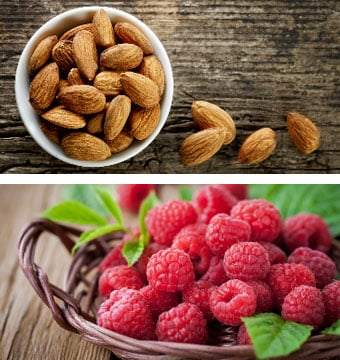
Foods that are high in antioxidants
will have a high ORAC value.
The higher the ORAC value
the higher the antioxidant value.
Apparently, acai fruit is one of the highest on ORAC, for example.
Examples of High ORAC in Foods (per 100gms)
- Dark chocolate: 20,816 ORAC score
- Cocoa: 80,933 ORAC score
- Pecans: 17,940 ORAC score
- Artichoke (boiled): 9,416 ORAC score
- Elderberries: 14,697 ORAC score
- Wild blueberries: 9,621 ORAC score
- Cranberries: 9,090 ORAC score
- Kidney beans: 8,606 ORAC score
- Blackberries: 5,905 ORAC score
- Goji berries: 4,310 ORAC score
- Cilantro: 5,141 ORAC score
Examples of High ORAC in Herbs and Spices
- Cloves: 314,446 ORAC score
- Cinnamon: 267,537 ORAC score
- Oregano: 159,277 ORAC score
- Turmeric: 102,700 ORAC score
- Cumin: 76,800 ORAC score
- Parsley (dried): 74,349 ORAC score
- Basil: 67,553 ORAC score
- Ginger: 28,811 ORAC score
- Thyme: 27,426 ORAC score
Now you can see why we add a lot of culinary herbs and spices to our EBV Protocol! Not only do they spice up our taste buds and bring added delicious flavors, but they easily increase the healing capability of our meal.
And, the best part, they are readily available. We use these generously in our EBV Recipes (available in my book The EBV Solution and our EBV Recovery Program).

Fruit Superheroes!
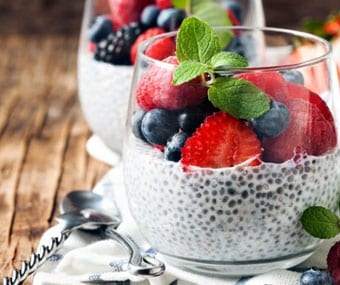
Society has become fruit-phobic. Even in functional medicine, practitioners are now weary of recommending fruits.
Fruits have gotten such an unfair reputation as having “too much sugar” – as a nutritionist with almost 20 years of clinical experience, I’m alarmed at how fearful we have become of this perfect food group.
If you experience health problems or symptoms from eating fruits, you have other issues that need addressing. It may be SIBO, candida overgrowth, H.Pylori, mold toxicity, and more (we have modules discussing all of these co-infections in the EBV Recovery Program, because they are so common in our students).
With these co-infections, you want to work with a clinical nutritionist – someone unbiased towards fruits and experienced clinically would be best.
Many with EBV reach out to me for one-on-one help to navigate their gut mysteries and food issues. While I no longer have a full time one on one practice, I do offer Power Hour sessions (at a highly reduced price to our EBV Recovery Program Students). We also have the Illuminate Healing VIP Experience – a group of four students and I, working through the EBV Recovery journey for 6 month to heal physically, emotionally, spiritually and mentally from EBV.
The Best Way to Eat Fruits for EBV
I want to encourage you to seek out organic or wild fruits (e.g. wild blueberries are now available in many stores in their frozen section) and make sure you have some in the morning and then as a snack between meals.
Fruit is perfect when you crave a sweet snack,
or when your energy tanks in the early afternoon.
There is nothing wrong with eating a couple of cups of fresh in-season organic cherries in one sitting. In fact, I have fond memories of doing so every summer when I was growing up in Poland.
The only thing to remember is to have fruit between meals or before a meal, for optimal digestion, so they do not sit there on top of your dinner, fermenting in your gut!
One hour before a meal or two to three hours after a meal will help prevent fermentation (which can cause unpleasant bloating, gas, or distention).
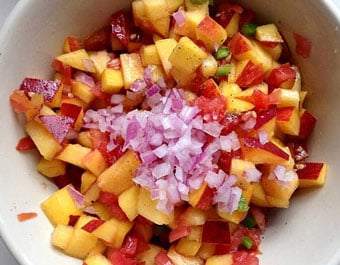
Herbs and Spices: Enjoy with Wild Abandon!
There is a reason why botanicals are not the foundation of my nutritional supplement protocol and methodology for EBV Recovery. They do not multitask as well as antioxidants and they alone are generally not as equipped to move the needle and keep EBV out of your life sustainably. We use herbs and spices as an important adjunct to slow down EBV even more.
Every time you open your mouth, you want to give EBV
an additional punch. Culinary herbs and spices
are delicious, add spice and delight to the taste
buds, and elevate any recipe.
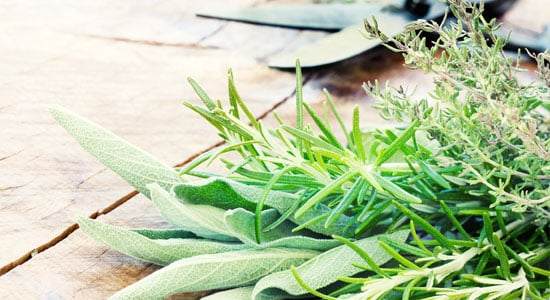
Upgrade your Kitchen Pantry!
Let’s keep it simple and practical in your kitchen pantry.
- First, discard herbs and spices that are more than one year old because their medicinal potency has already diminished substantially (and so has their flavor – you want the flavor to pop from the fresh herb or spice).
- Second, buy small amounts of spices in bulk for freshness and potency – this will also save you money.
- Third, with the exception of cloves, cinnamon and star anise, buy spices whole and only grind them as needed. If you do THAT, I guarantee you that your “common” spices will wow you!
Throw a pinch of star anise into your smoothie or cooked oatmeal.
Add cardamom to your dessert.
Throw rosemary, thyme, cumin, marjoram, or oregano into soups.
Top your meal with a full handful of freshly chopped basil, cilantro, parsley, or green onion.

For more practical tips and pearls from my kitchen visit the Spices 101 video demo I did a number of years ago here.
Herbal Teas for EBV!
Herbal teas are also formidable and can do some good work against EBV. They come with various additional benefits, so they are a great addition to your EBV regimen. Need to boost your iron? Pick stinging nettle. Need to cleanse your liver? Then add dandelion root tea.
If you are a tea lover like me, you’re going to love the EBV-focused blog post I did on the Many benefits of Herbal Tea (all my favorites are included).

And if you want to become an expert on herbal teas for EBV, there is an entire chapter devoted to herbs and spices in the EBV Solution book.
Specific herbal teas target EBV.
They are inexpensive, readily available,
and make for a pleasant daily ritual.
You can sip one hot with a meal.
Simple.
Nourishing.
Smart.
Rebuild with Fiber
Many studies find that most people do not consume even half of the amount of needed fiber in their diet. Less fiber can mean more chronic illness and inflammation in those with EBV.
Fiber is the best “chelator” –
This is how the body gets rid of toxins.
Fiber helps scrape and engulf toxins
as your stool makes its way through your colon.
Fiber allows you to excrete toxins on a regular basis – preferably twice a day (if you have only one movement daily, you are actually constipated). Less than one a day, you’re in trouble!

Remember, oxidation created by EBV has to go somewhere. It is toxic! Fiber helps with the cleanup. Once fiber engulfs the toxins (think of oatmeal expanding in water), the whole concoction makes its way into the stool.
Your colon is the major elimination highway for toxins
and your stool is the vehicle that gets the debris out of your body.
Fiber is our friend!
There is no fiber in animal-derived food (no exceptions), or in oils, and very little in processed/packaged foods. When you see 1 or 2 grams of fiber per serving on a box, think twice and put that box back on the shelf; it’s not worth your health or your money. The body craves living plants!
The whole food groups that are great sources of antioxidants, are the same groups that are the best sources of fiber: fruits, vegetables, whole grains, legumes, nuts, seeds, and culinary herbs and spices. How consistent nature is!

Your Immune System Needs Fiber Too!

In our new COVID reality, we are quite focused on fortifying our immunity. Well, look no further than your kitchen -that is your foundational ground for immunotherapy. Fiber is life. You would die without it. Now you appreciate it for cleaning your toxic debris. You may not know that fiber is one of the best protections against cancer…
And now, I am telling you that fiber also feeds your immune system – in particular, your T-regs. T-regs are important immune regulatory cells, your immune system’s very own Supermen (Bollrath et.al., 2013).
What may motivate you even more to improve the fiber content in your diet is the fact that:
T-regs have the power to downregulate bad T-cells,
in particular T-17, the notorious T cells
responsible for triggering autoimmunity!
What if fiber causes you more pain?
Some people really struggle with fiber. They get bloated or even distended to the point of pain. This is not a normal or sustainable scenario, and it is not how we are designed. You may have gut infections. These can range from fungal overgrowth to SIBO – especially if fiber causes more constipation, to other co-infections. The goal is always to find the root cause of the issue first and then correct it.
Because we have many students healing from SIBO,
our EBV Recovery Program Food Modules
contain specific food modifications
and non-dietary advice for those with SIBO
to ensure they are properly directed
and their nutritional needs are met.

For more information on the symptoms associated with SIBO (Small Intestine Bacterial Overgrowth), you can read my blog post here.
Junkfood, NFkB and EBV

So far, we have focused on the positive to crowd out the processed junk. I have no doubt you can easily upgrade a few things in your fridge, pantry, spice cabinet, and freezer to work towards a plant-based diet that contains whole foods (versus “entertainment products” – food products in boxes).
We have also discussed the fact that EBV becomes more aggressive whenever your nutritional status drops.
There is one more dietary factor that is of utmost importance to those with EBV…
Poor quality food products (aka junk foods) increase NFkB, a particularly nasty inflammatory marker.
Unfortunately, EBV likes to hijack NFkB to replicate.
The more NFkB you produce from eating junk food,
the more EBV replicates.
One study showed that a big McDonald’s type breakfast increased NFkB by 150% for 2 hours (Aljada, et al., 2004). Next time you eat at a fast food restaurant, notice if you feel EBV symptoms flaring up as a result.
Here are your best anti-NFkB friends, add them to your EBV protocol to reduce your NFkB:
- Antioxidants in general – you can also refer to ORAC scores
- Basil
- Bee propolis
- Boswellia serrata (Frankincense)
- Cloves
- CoQ10
- DHA and EPA (essential Omega 3 fatty acids)
- Garlic
- Ginger
- Glutathione
- Licorice (tea is good)
- Grape seed extract, Pycnogenol, and Resveratrol (all available in the product OPC-3)
- Green tea
- Cabbage family (indole-3 carbinol)
- N-Acetyl Cysteine
- Pomegranate
- Red hot pepper
- Rosemary
- Selenium
- Zinc

Foods to Avoid for EBV
The 3 Biggest Offenders:
In most cases, gluten, dairy and eggs are off the table.
If you are not willing to try taking gluten, dairy, and eggs
out of your diet for a few months to test your improvement,
you will never know if they are triggers for EBV.
Prolonging exposure to these food groups
could be hindering your full recovery.
1. Gluten
Gluten is such a confusing and pressing topic that I wrote a separate blog about it for you. You can read the whole blog here: Gluten and EBV: Should I Eat Wheat and Gluten If I Have EBV?
2. Eggs

I am often asked about eggs in particular. Do we really need to eliminate them? This is a mostly gray area, but there is some research that is troubling.
If you are wondering how our community is responding to eating eggs, I do not have the best news for you. In general, (with exceptions of course) people with EBV do better and sometimes substantially better, without eggs. Read more on Egg, Allergies and EBV in my blog here (I also share egg substitutes for recipes, and a fan favorite low glycemic GingerBread Man Cookie recipe).
3. Dairy
Here is information on dairy independent of EBV.
Dairy is a very interesting food group. You are told that you need milk for healthy bones and yet, epidemiological studies suggest otherwise – societies relying on dairy in their diet have increased risk of osteoporosis. Studies are consistent. For example, The Harvard Nurses’ Health Study, which followed more than 75,000 women for 12 years, showed no protective effect of increased milk consumption on fracture risk. In fact, increased intake of calcium from dairy products was associated with a higher fracture risk (Feskanich et.al., 1997).
Dairy is inflammatory and constipating in general. Diet rich in dairy, including ice-cream, cheese, milk, butter and yogurt can increase risk of cardiovascular disease and diabetes. Several types of cancer are also linked to dairy consumption, e.g. breast cancer and prostate cancer. Cheese, in particular, creates an opiate-like effect in your brain, making you, in effect, addicted to it.
“These opiates attach to the same brain receptors that heroin and morphine attach to.
They are not strong enough to get you arrested, but they are just strong enough to keep you coming back for more, even while your thighs are expanding before your very eyes.” (Barnard, 2017)
Dairy industry practices are appalling to say the least. If only you saw how your cheese or milk was produced. Not to mention the environmental impact on our planet from the methane levels this industry produces. To see how our needs differ let’s review human physiology versus’ that of a baby cow. The latter has to grow hoofs and horns in a matter of a few months. We do not. Proteins found in cow milk do not exactly match the amino acid make-up of a mother’s breast milk. The human baby is designed to consume mother’s breast milk – for perfect immunoglobulins to help build the baby’s immune system and gut terrain. For every mammal on this planet, mother’s milk is only made and provided to the baby. Then the baby is weaned off. We are mammals and our needs for milk also end after infancy!
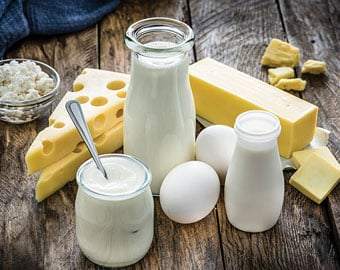
Dairy consumption, even without having to deal with EBV, can cause a true laundry list of health issues, from unpleasant symptoms such as acne, eczema, sinus congestion or constipation to more serious issues such as various autoimmune conditions, asthma, and even possibly cancer.
Breaking the habit with cheese will be the hardest for you to walk away from due to the opiate like effect (similar to chocolate!). But trust me, once you do, you will feel absolutely no need to have it.
Attention: Non-Dairy Milk
Non-dairy milk is a big business now, so it is very easy to replace cow’s milk with non dairy milk – it is readily available. Unfortunately, this means many non-dairy milk makers are cutting corners. You need to read the ingredients. Unfortunately, sugar and fillers (like carrageenan or other “gums”) are notoriously added to non-dairy milk, even if you pick the “original” version. Mark my word: flip the box and read the ingredient list and you will find sugar on the list. In addition, you will most likely see the cheapest versions of B12 (cyanocobalamin), as well as the wrong form of vitamin D (D2). Some non-dairy milks are not worth the effort. For example, rice milk is mostly water and sugar.
It is very easy to make a small batch of your own non-dairy milk, and it is seriously worth doing because the flavor and consistency is tremendously better! I did a video demo for a very simple recipe of non-dairy milk here: How to Make a Simple Non-dairy Milk
EBV and Dairy
We are yet to see direct studies showing a relationship between EBV and dietary dairy. From my clinical perspective, what is quite evident in our community is that removal of dairy improves gastrointestinal symptoms, arthritic type of pain, constipation, bronchial health, including asthma, inflammation and a whole laundry list of other complaints. It is also not uncommon for dairy to trigger worsening of EBV symptoms and even EBV reactivation, although we do not know the exact mechanisms behind it at this time.
What about animal products in your diet?
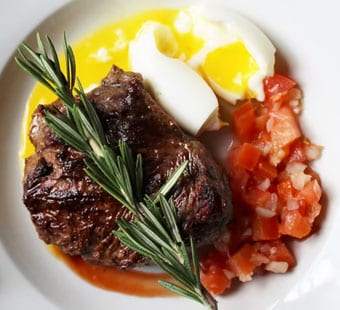
A little meat, poultry or seafood goes a long way.
Meat and poultry: I would be conservative with animal products – perhaps once a day, if that. Quality matters – skip products from factory farming, including fish. Notice how your bowel movements change with increased consumption of meat. You still want two stools a day. You do not want excess meat displacing the essential fiber that gets the bowels moving (anad feeds your Tregs).
If you think you can’t sustain yourself without meat, it is worth either reading my book or working with a seasoned nutritionist so that you learn to actually balance your meals. This is not something we learned in school or from our parents. It makes a particularly big difference in a person with EBV.
Fish: It may be less detrimental than meat or poultry for some reasons but worse for others. Unfortunately, fish tend to have high levels of pollutants, including heavy metals like mercury and microplastic. If you eat fish, avoid large fish like tuna, and any farmed fish. The smaller fish the better. Stay away from farmed fish.
BEST KEPT SECRET! Balancing Your Adrenals and Sugar
Once you up-level your food intake and start enjoying fruits (or work with a practitioner to help you figure out why you cannot tolerate them), move to the next level of EBV literacy:
No matter what you eat, balance your meal.
By the time your EBV goes chronic, your adrenals are heavily taxed. Sometimes part of your chronic fatigue is from that and not entirely from EBV! Let me repeat that because it is that important. When you feel wiped out, especially by the early afternoon, and you suffer from laden heavy brain fog or fatigue, it may actually NOT be all EBV. Time and time again, when our students learn the process of balancing glucose through very simple dietary steps, they discover they have more gas in their energy tank than they ever thought possible.

Balancing meals means that each meal should have some protein, carbohydrates and a little healthy fat.
All that should come from foods rich in fiber.
I teach that extensively in my book and in the EBV Recovery Program, so I encourage you to check out either if your energy and focus run on empty as the day goes on.
Which Diets Do Not Work for EBV
I have just mapped out the most important things for you to focus on.
This is the foundation that will decrease the reactivation rate and intensity of EBV.
If you are curious about diets, it all depends on the individual, so this is a gross generalization, but here is what I would say:
- Ketogenic diet: One of the worst diets for EBV – probably because the liver is already taxed by EBV. It is not sustainable. Also, with your adrenals being compromised by chronic EBV, you do require quality carbohydrates to regenerate the adrenals and give your brain fuel (to work and think) and your body energy. Ketogenic diet may be overly focused on animal sources of food and not provide the necessary fiber.
- Low FODMAP: This diet is for SIBO (Small Intestinal Bacterial Overgrowth). It is not sustainable in itself and should be used short term while working on solutions for your SIBO. This is not a diet for EBV. Long term, it can also induce nutrient deficiencies like molybdenum, which can lead to a more inflamed gut and increased candida toxicity.
- Any kind of fasting: If you have chronic EBV, this is the last thing you want to do. This is NOT a good time for fasting or intermittent fasting. First, you need to learn how to balance meals, as we just discussed above. Next, you need to implement a schedule of when to eat to stabilize your adrenals, brain function and energy level. Fasting is not a safe process for our community. You are already malnourished and stretched thin, and will do much better with regular balanced meals.
- Paleo Diet: I am all for eliminating dairy and gluten. This diet, however, may lead to excess animal protein and is too restrictive. It may lead to some nutrition deficiencies and you should consult a nutritionist to make sure your nutritional status is not compromised. I do not find this diet to be particularly beneficial in long-term management of EBV.
- Paleo-Autoimmune Diet: This is a highly restrictive diet for very compromised individuals and, like any therapeutic diet, it should only be used short term and under supervision. This diet is not a long-term solution. If this is the only diet you are able to tolerate, you are, indeed, in trouble and in need of a functional nutritionist. I have done much damage control as a nutritionist with people that used this diet in good faith, but had to continue restricting foods as they would get progressively reactive to more food.
It can cause unwanted weight loss, decrease in function, and psychological damage including fear of foods and orthorexia (obsession with proper or ‘healthful’ eating). If you have to sustain yourself on this diet, I strongly recommend a practitioner (like a functional clinical nutritionist) to help you stabilize and find the root cause of all your food sensitivities.
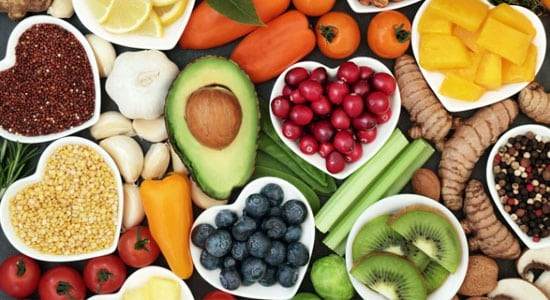
What if you are not on any diet in particular but are overly sensitive to whole food groups? In my experience, in some cases, EBV may actually be THE factor behind that. As you heal from EBV, your ability to expand food groups improves!
Working on your EBV can allow you to expand your diet
and enjoy more foods in your life.
What Should You Do Next?
I hope the information above is not overwhelming and pretty straight forward. Simple whole foods, herbal teas, and culinary spices are our best allies when dealing with EBV. I bet you have many of these in your kitchen already and if not, you can get them easily.
Below are many more resources with practical tips and tools that you can immediately add to your kitchen as well.
I know you will feel better.
Diet can be a huge needle mover for a person with chronic EBV!
If you are truly struggling and need to start working towards your improvement right away, then I highly recommend you jump into our on demand EBV Recovery Program, you can see a sneak peek inside some of the modules in the video.
References
Aljada, A., Mohanty, P., Ghanim, H., Abdo, T., Tripathy, D., Chaudhuri, A., & Dandona, P. (2004). Increase in intranuclear nuclear factor kappaB and decrease in inhibitor kappaB in mononuclear cells after a mixed meal: evidence for a proinflammatory effect. Am J Clin Nutr, 79(4), 682-690.
Barnard, N. D., Burton, D., & Henner, M. (2017). The cheese trap : how breaking a surprising addiction will help you lose weight, gain energy, and get healthy (First edition. ed.). New York: Grand Central Life & Style.
Beck, M. A. (2000). Nutritionally induced oxidative stress: effect on viral disease. Am J Clin Nutr, 71(6 Suppl), 1676S-1681S.
Bollrath, J., & Powrie, F. (2013). Immunology. Feed your Tregs more fiber. Science, 341(6145), 463-464. doi:10.1126/science.1242674
Cramer, D. W., Harlow, B. L., Willett, W. C., Welch, W. R., Bell, D. A., Scully, R. E., . . . Knapp, R. C. (1989). Galactose consumption and metabolism in relation to the risk of ovarian cancer. Lancet, 2(8654), 66-71. doi:10.1016/s0140-6736(89)90313-9
Feskanich, D., Willett, W. C., Stampfer, M. J., & Colditz, G. A. (1997). Milk, dietary calcium, and bone fractures in women: a 12-year prospective study. Am J Public Health, 87(6), 992-997. doi:10.2105/ajph.87.6.992
